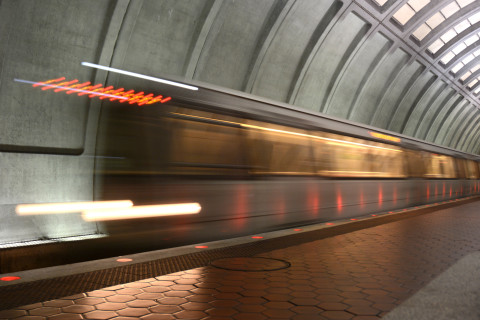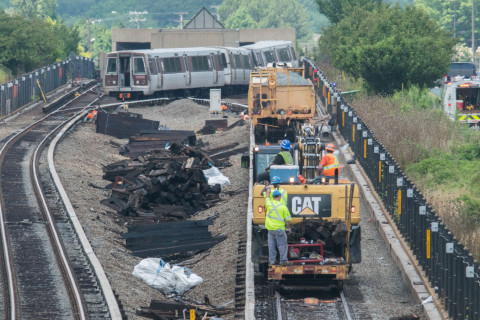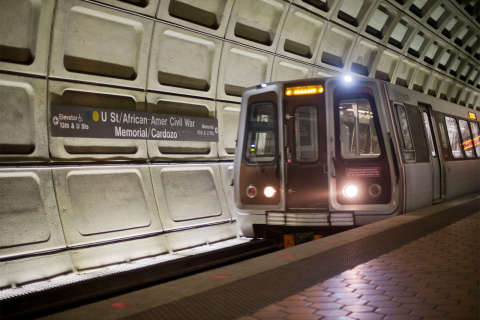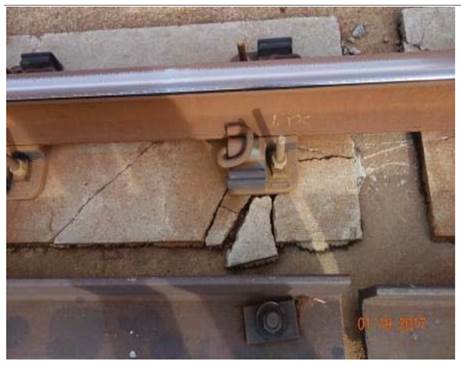
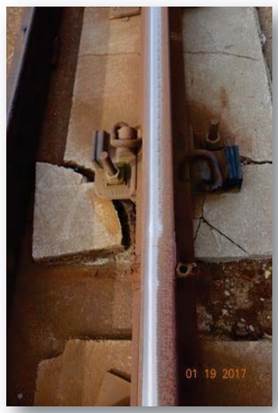
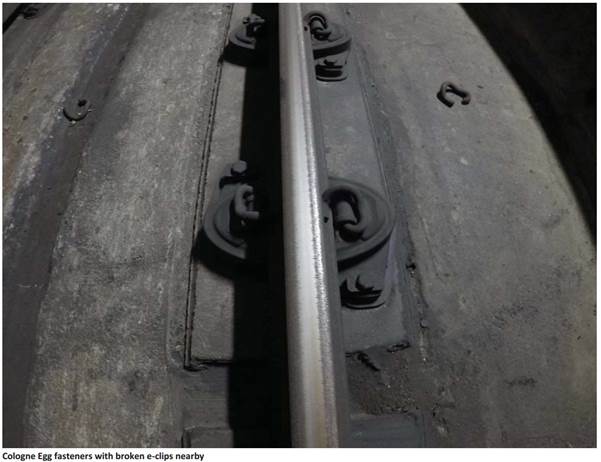
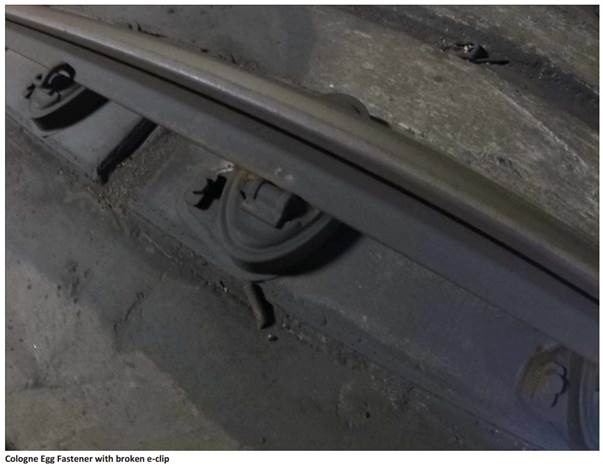
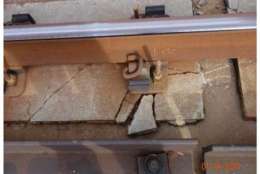
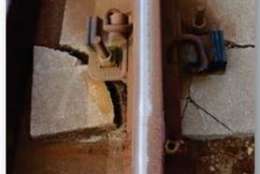
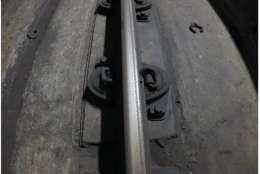
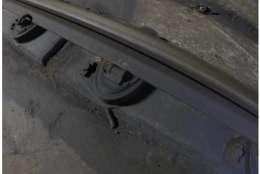
WASHINGTON – Metro deliberately ignores some of its own safety rules for convenience, a new batch of federal inspection reports show, but the agency is making progress in areas such as communication between train operators and central controllers.
The documents also outline the Federal Transit Administration’s initial look at what might be causing homes to shake above the Green Line tracks in Northwest Washington.
Overall, Metro has 452 FTA-identified issues that remain to be fixed as of the end of January. These issues are mainly tied to the tracks or the power system.
In 24/7 surge zones, the FTA has noted 73 individual issues identified for repairs by the FTA that have not yet been fixed, from the first surge last June through surge 11 (which ended Dec. 21).
Fifty broader corrective action plans, meant to address more systemic issues, have now been approved by the FTA. Ninety-five are past their originally estimated due dates. Thirty-four have been submitted by Metro for review, and the remaining 119 are not yet due.
On March 8, FTA accepted changes to track maintenance corrective action plans, including: adding time allocated for track inspection; improved prioritization of track maintenance; and ensuring adequate resources for completing inspection and repair of special track work.
Metro does not follow some of its own worker safety rules
Metro regularly ignores at least two of its own worker safety rules, the agency informed federal inspectors in December.
A federal inspector had to object Dec. 7 to going onto the Red Line tracks between Metro Center and Gallery Place because the designated watchman/lookout was not carrying a required air horn or a required reflective work zone disc meant to alert train operators to a crew ahead.
The next day, the FTA inspector learned Metro “does not strictly adhere” to those two rules because the rules require the watchman/lookout to carry too much equipment.
Federal safety experts are discussing alternatives with Metro, but as of the time of the reports, no solution had been reached.
Federal inspectors have separate, more general concerns about the levels of worker protection used on the tracks, which sometimes allow trains to pass through work zones even though single tracking might be safer.
Several reports also noted trains still speeding past work crews at a speed much faster than the approved 10 mph.
However, the FTA acknowledged some initial progress in Metro’s effort to remap the rail system to ensure that all of the most dangerous locations for workers are properly noted.
Dangerous stretch of track
An entire stretch of Orange Line tracks near Minnesota Avenue is in urgent need of repair, a federal inspector found Jan. 19.
While many of the issues were minor on their own — e.g., loose bolts as well as crumbling concrete supports for fasteners holding tracks in place — the inspector wrote that, combined, the issues “require repair to provide for safe operations over the entire section.”
In the area that inspector looked at, work crews quickly arrived to tighten bolts.
“This is only a temporary measure,” the report said. “The bolts will once again be loose within approximately 90 days.”
For May and June, Metro is adding a 24/7 work zone on the Orange Line between Minnesota Avenue and New Carrollton to address a long list of FTA concerns.
A Jan. 31 inspection of the Orange Line between Stadium Armory and Minnesota Avenue found, in addition to crumbling concrete, lots of water sitting in parts of the tunnel.
Repairs put off
Federal inspectors had directed Metro to fix a number of track issues at Reagan National Airport, but an inspection Jan. 18 found many of those fixes had not been made.
Concrete was still cracking or failing in areas that had not been addressed during the round-the-clock work zone in that area last year.
“There was evidence that many grout pads and direct-fixation fasteners had been previously marked for repair (faded paint stick markings) but were not completed,” the report said.
In one spot, loose rail fasteners were allowing the rails to slide back and forth as trains passed over.
Inspectors found similar issues the next day at the spot where the Blue Line crosses over the Capital Beltway.
At other locations, inspectors found that Metro continues to install rail ties that apparently don’t meet internal size standards.
In a December inspection early in the track work surge between East Falls Church and West Falls Church, an inspector found, among other issues: the wrong-size rail ties; tie plates not properly centered to support track infrastructure; and inconsistent rail tie spacing.
A follow-up inspection after the work zone was completed found many of the issues were resolved. And inspectors did note that in other parts of the system, Metro had made some of the fixes directed by the oversight group.
The FTA rejected Metro’s assertion that it was resolving issues with broken handrails along tunnel catwalks. That issue was supposed to be fixed after a June 14, 2013, incident in which a train hit an unsecured handrail, causing about $500,000 in damage.
Of 10 locations where Metro had noted loose or bent handrails, at least four had not been fixed.
Trains shaking homes?
After people living near the Green and Yellow Line tracks near the Georgia Avenue Metro station complained that Metro trains might be shaking their homes, the newly released reports show federal inspectors went out in December to look for a source of the problem.
Over a stretch about 1,300 feet long, the inspector found “numerous” clips, which were supposed to hold the rails in place, broken off of the fastener bases.
When working correctly, the fasteners that had these clips reduce the vibrations going into the tunnel and the neighborhood above.
On one of the tracks in the area, the inspector noted that even recently replaced clips had already snapped off.
A different type of fastener that’s also in use in the area did not have similar issues, but that fastener was not designed to dampen the vibrations from trains.
The FTA suggests that the increasing use of more new trains in the Metro system, which are heavier than older models, could be contributing to increased vibrations and pressure on the fasteners.
This is exacerbated by the location of the stretch just outside of the Georgia Avenue station because trains put more force on the tracks when braking or accelerating.
Metro has not yet reached any final conclusions on what may be causing the vibrations, spokesman Dan Stessel said.
Switch inspections skipped?
Metro may not have properly inspected a number of switches in its railyards, a review of Metro inspection records showed in late December.
October inspection reports for the Brentwood Rail Yard did not account for any of the required inspections on 11 switches.
The Federal Transit Administration review of the Brentwood yard’s inspection records came just days after General Manager Paul Wiedefeld announced discipline for nearly half of the track inspection department.
That discipline stemmed from a separate internal review of systemwide inspection records that was triggered by a July derailment near East Falls Church.
Signs of improvement at troubled Rail Operations Control Center
There have been apparent improvements in Metro’s equivalent of an air traffic control center, but work crews still face delays accessing tracks, making work less efficient.
In one case, delayed access to an electrical room meant work could not be completed.
The crews were allowed in at 1:40 a.m., and ordered out at 4:30 a.m., even though the federal inspector said finishing troubleshooting work would have taken at least two more hours.
The inspector suggested crews could have started setting up earlier, and could have been more efficient if the switchgear being checked had not been so old that the wiring plans were nearly impossible to find.
The Rail Operations Control Center and all other aspects of Metro’s operations won praise from federal safety inspectors for their performance Jan. 20 and Jan. 21 for President Donald Trump’s inauguration and the Women’s March on Washington crowds the following day.

